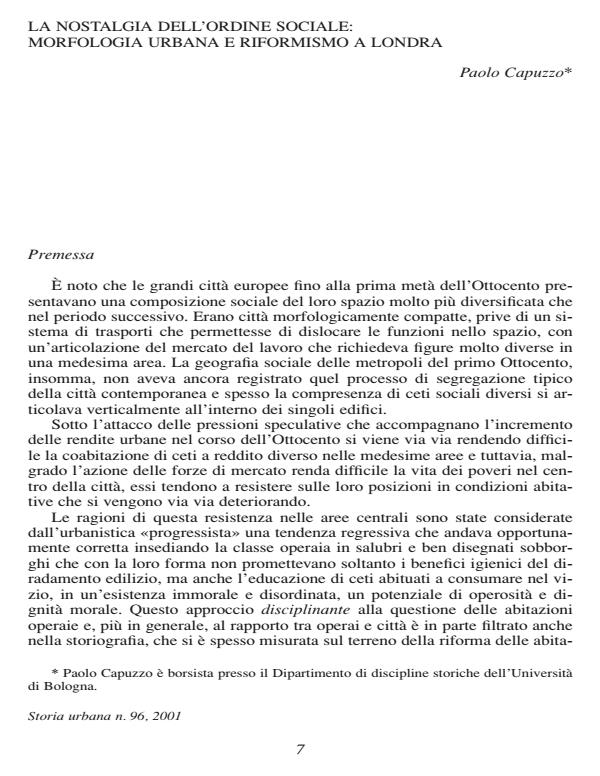La nostalgia dell'ordine sociale: morfologia urbana e riformismo a Londra
Journal title STORIA URBANA
Author/s Paolo Capuzzo
Publishing Year 2003 Issue 2001/96
Language Italian Pages 27 P. File size 114 KB
DOI
DOI is like a bar code for intellectual property: to have more infomation
click here
Below, you can see the article first page
If you want to buy this article in PDF format, you can do it, following the instructions to buy download credits

FrancoAngeli is member of Publishers International Linking Association, Inc (PILA), a not-for-profit association which run the CrossRef service enabling links to and from online scholarly content.
City planning programs of late nineteenth-century reformers were generally based on the clearance of slums and the suburbanization of the working class in order to promote improvements in the physical environment along with the moral customs of the lower class. Despite the ideological commitment shown, achievements prior to the First World War were relatively few. During the period between the wars, however, a powerful suburbanization process took place around the London area, supported by public and, above all, private financial resources. Then, in the 1930s, public intervention started to support re-modernization projects and the redevelopment of derelict inner-city areas as a result of the increasingly obvious disadvantages of an urban strategy that had focused almost entirely on decentralization. After the Second World War, redevelopment of inner-city areas and better planning of suburbanization continued and clearly improved the urban environment of London, but attempts to improve social order by controlling the physical layout of the city recorded a substantial failure.
Paolo Capuzzo, La nostalgia dell'ordine sociale: morfologia urbana e riformismo a Londra in "STORIA URBANA " 96/2001, pp , DOI: